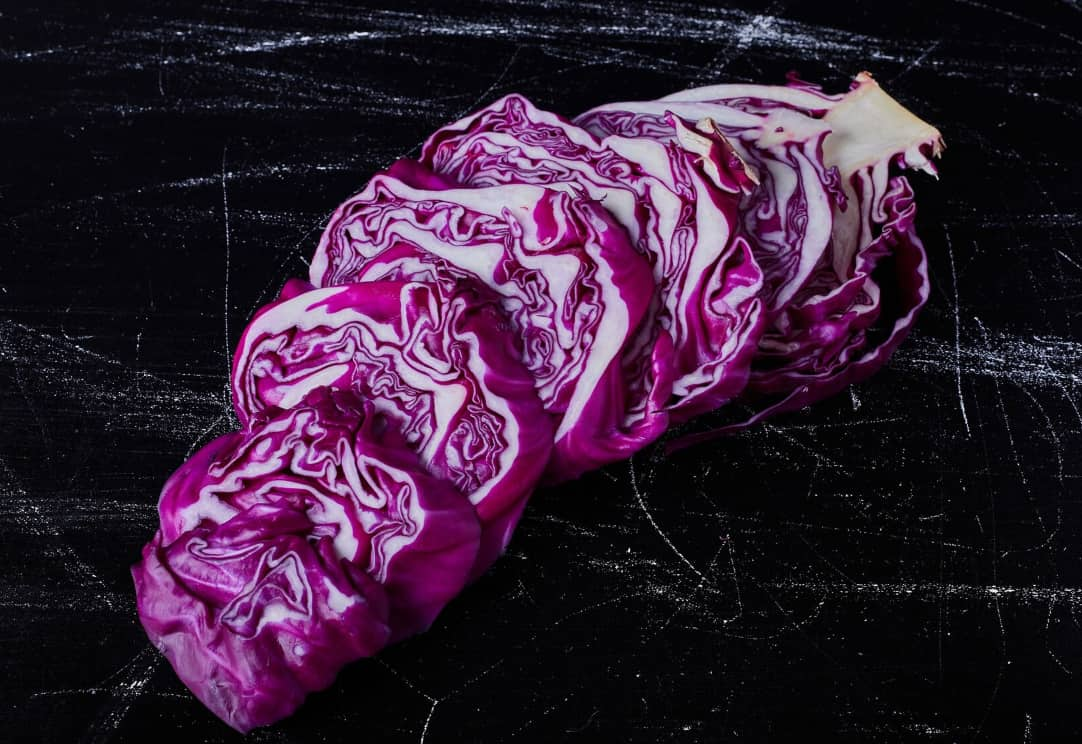Are you itching to know if you’re having a boy or a girl? While waiting for that big ultrasound, many expectant parents turn to at-home gender prediction methods for a bit of fun.
One quirky option that’s been making waves is the red cabbage pregnancy test.
This DIY method claims to predict your baby’s gender using nothing more than some red cabbage and your urine.
It’s not backed by science, but it’s cheap, easy, and harmless.
Red Cabbage Pregnancy Test

Let’s dive into this colorful experiment that’s captivating curious parents-to-be across the internet!
What on Earth is the Red Cabbage Pregnancy Test?
The red cabbage test is a homemade way to try and predict your baby’s gender using – you guessed it – red cabbage and your pee.
It’s not a scientific method, but some people swear by it.
The basic idea is that the color change when you mix cabbage juice with urine can supposedly tell you if you’re having a boy or a girl.
How Did This Wacky Test Come About?
The origins of the red cabbage test are a bit murky. It seems to have gained popularity through online pregnancy forums and social media in recent years.
The test is based on the idea that hormone levels in a pregnant woman’s urine might affect the pH (acidity level), which could then cause a color change when mixed with cabbage juice.
But keep in mind, this is all speculation – there’s no real science backing it up!
How to Do the Red Cabbage Test?
Curious to try it yourself? Here’s a simple step-by-step guide:
What You’ll Need:
- 1 head of red cabbage
- A pot for boiling
- A strainer
- Two clear containers
- Your urine sample
Steps:
- Chop the cabbage into small pieces.
- Boil the cabbage in water for about 10 minutes.
- Strain the liquid and let it cool.
- Collect your urine in a clean container.
- Mix equal parts cabbage juice and urine in a clear container.
- Observe the color change and interpret the results.
Reading the Results
Here’s the fun part – figuring out what the color means! According to the test:
- Pink or red = It’s a boy!
- Purple = It’s a girl!
But remember, this is just for fun. The results are not reliable!
The “Science” Behind the Red Cabbage Pregnancy Test:
Now, let’s talk about why some people think this test might work. It all comes down to pH levels.
- pH levels in urine: During pregnancy, hormone changes can affect the pH of your urine.
- Red cabbage chemistry: Red cabbage contains compounds called anthocyanins that change color based on pH.
- The reaction: When you mix the cabbage juice with urine, the anthocyanins react to the pH level, causing a color change.
But here’s the catch – while pregnancy can affect urine pH, there’s no scientific evidence that the pH is different for boy and girl pregnancies.
So the whole basis of the test is pretty shaky!
How Accurate is the Red Cabbage Test?
Let’s be real – the red cabbage test is not a reliable way to predict your baby’s gender. Here’s why:
- No scientific proof: No studies are showing that this test works.
- 50/50 chance: With only two options (boy or girl), you’ve got a 50% chance of guessing right anyway!
- Inconsistent results: Many people report getting different results if they try the test multiple times.
Pros and Cons of the Red Cabbage Pregnancy Test:
Pros:
- It’s cheap and easy to do at home
- Can be a fun activity with friends or family
- Harmless way to satisfy curiosity
Cons:
- Not scientifically accurate
- Results can be hard to interpret (Is it pink or purple?)
- Might lead to disappointment if you rely on the results
Other At-Home Gender Prediction Methods
The red cabbage test isn’t the only DIY gender predictor out there. Here are a few other popular methods:
- Chinese Gender Chart: Uses your age and month of conception to predict gender.
- Ring on a String Test: Dangle a ring over your belly and see how it swings.
- Baking Soda Test: Mix urine with baking soda and watch for fizzing.
At-Home Gender Prediction Methods
| Method | What It Involves | Claimed Accuracy | Scientific Basis |
|---|---|---|---|
| Red Cabbage Test | Mixing cabbage juice with urine | Varies | None |
| Chinese Gender Chart | Using age and conception date | ~50% | None |
| Ring on a String | Dangling ring over belly | Not measured | None |
| Baking Soda Test | Mixing urine with baking soda | Varies | None |
Remember, all of these methods are just for fun and aren’t reliable ways to determine your baby’s gender!
What Do the Experts Say?
Medical professionals generally don’t put much stock in at-home gender prediction methods. Here’s what you need to know:
- OB-GYNs and midwives typically discourage relying on these tests.
- There are no risks to trying these tests, as long as you don’t take the results too seriously.
- Proper prenatal care is much more important than trying to guess the gender early.
The Gender Reveal Craze
At-home gender tests have become more popular partly due to the rise of gender reveal parties.
These events, where parents announce their baby’s gender to friends and family, have blown up on social media in recent years.
Pros of gender reveal events:
- Can be a fun way to celebrate the pregnancy
- Brings family and friends together
Cons to consider:
- Can put too much emphasis on the baby’s gender
- Might reinforce gender stereotypes
- Can be disappointing if the reveal doesn’t match later test results
Reliable Ways to Find Out Your Baby’s Gender
If you want to know your baby’s gender, here are the most accurate methods:
- Non-invasive prenatal testing (NIPT): A blood test that can determine gender as early as 10 weeks.
- Ultrasound: Can usually determine gender around 18-20 weeks.
- Amniocentesis or CVS: These tests are typically done for genetic screening but can also reveal gender.
FAQs About the Red Cabbage Pregnancy Test
- Is the red cabbage test safe?
Yes, it’s completely safe as long as you don’t ingest anything.
- When can I do the red cabbage test?
You can try it any time during pregnancy, but many people do it in the second trimester.
- Will the test affect my baby in any way?
No, the test doesn’t involve anything that would affect your baby.
- What if I can’t tell if the result is pink or purple?
This is common! If you can’t tell, the test is inconclusive.
- Can I use other types of cabbage?
The test is specifically designed for red cabbage due to its color-changing properties.
- How many times should I do the test?
You can do it as many times as you like, but remember that the results aren’t reliable.
- What if the cabbage test result doesn’t match my ultrasound?
Always trust medical tests over at-home methods. The cabbage test is just for fun!
- Are there any other foods that can predict baby’s gender?
There are other food-based old wives’ tales, but none are scientifically proven.
- Can the father’s urine be used for this test?
No, the test is based on the idea of pregnancy hormones in the mother’s urine.
- Is it okay to be disappointed if the test doesn’t match what I was hoping for?
It’s natural to have preferences, but remember that the test isn’t accurate. Focus on having a healthy baby!
Also Check:
- Pros and Cons Of Pregnancy After Age 50
- How Many Days After Your Period Can You Get Pregnant
- Can I Still Deliver Vaginally If I Get Genital Herpes While Pregnant
Wrapping It Up:
The red cabbage pregnancy test is a fun and harmless way to guess your baby’s gender, but it’s not at all reliable.
Here’s what to remember:
- It’s cheap and easy to do at home
- There’s no scientific evidence that it works
- It’s just one of many unproven at-home gender prediction methods
- For accurate results, stick to medical tests like NIPT or ultrasounds
- The most important thing is having a healthy pregnancy and baby!
Whether you decide to try the cabbage test or not, remember to enjoy your pregnancy journey.
The surprise of meeting your little one, regardless of gender, will be worth the wait!



